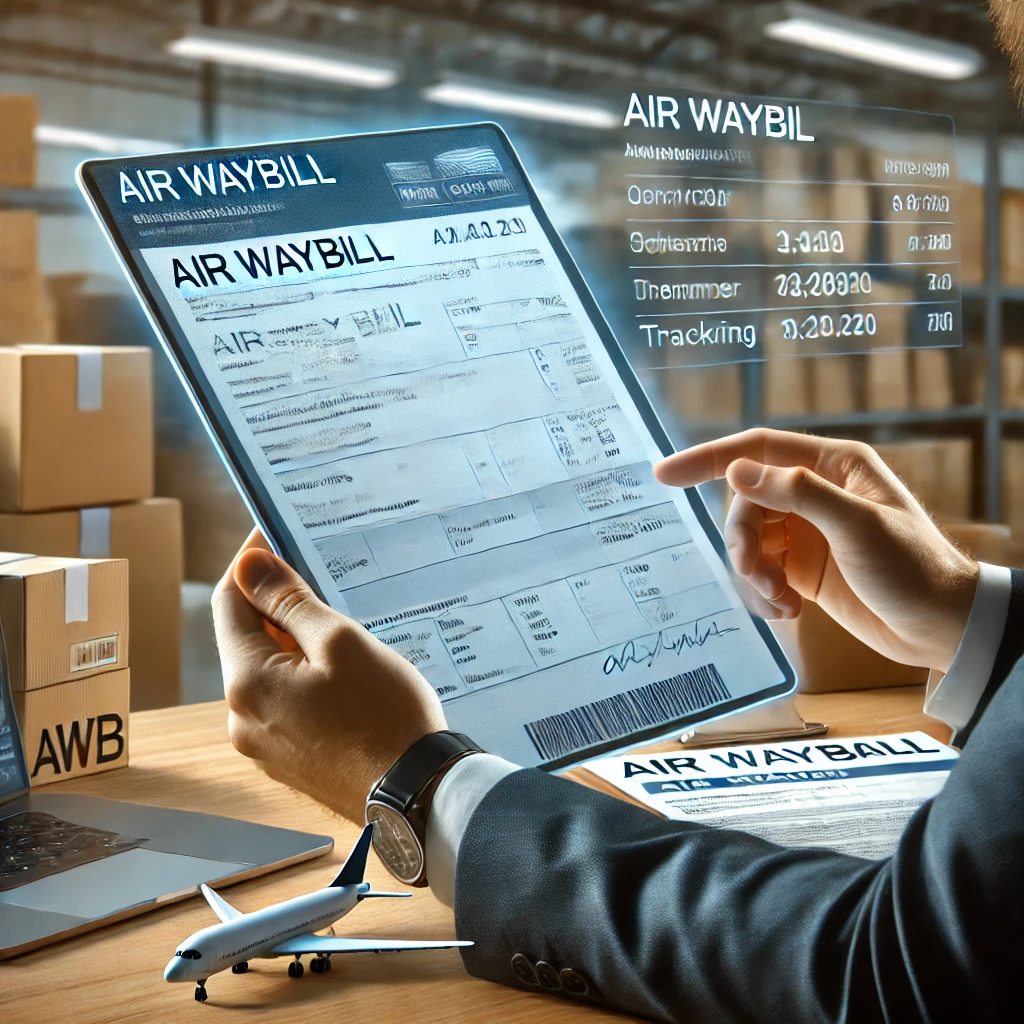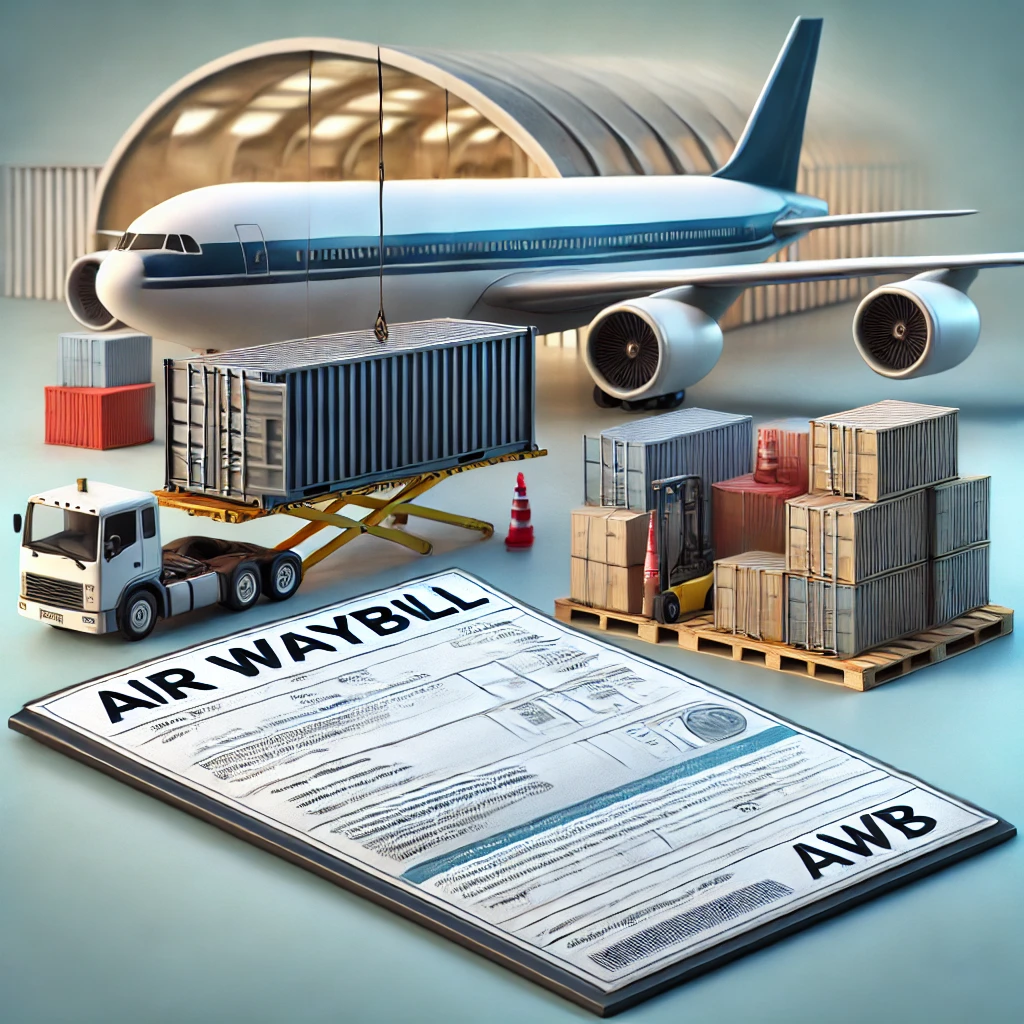The Basics of AWB: A Comprehensive Guide

What is an AWB?
An Air Waybill (AWB) is a crucial shipping document used in air freight to provide evidence of the contract between the shipper and the airline. It serves as a receipt for the goods, outlining the terms of the shipment, and acts as a tracking tool for the air cargo. The AWB is issued by the airline or air carrier and serves multiple purposes throughout the shipping process.
An AWB is non-negotiable, meaning it cannot be transferred to a third party like a bill of lading in maritime shipping. However, it plays a vital role in documenting the shipment and facilitating customs clearance and delivery.
Key Features of an AWB
- Shipment Information: The AWB contains key details about the shipment, including the names of the shipper and consignee, cargo details, destination, and special instructions.
- Tracking and Monitoring: The AWB includes a unique tracking number that allows both the shipper and consignee to monitor the progress of the shipment in real-time.
- Terms and Conditions: It outlines the terms of transportation, including the cost of shipping, payment methods, and other conditions related to the air freight.

How Does an AWB Work?
The AWB plays a central role in the air cargo process. It serves as a receipt of the cargo and acts as evidence of the agreement between the shipper and the airline. Here’s a breakdown of how it works:
- Booking and Documentation: The shipper or their agent books the shipment with the airline or air freight forwarder. At the time of booking, the AWB is created and issued, containing all necessary shipment information.
- Cargo Receipt: Once the cargo is received by the airline or carrier, the AWB serves as the receipt that confirms the airline has taken possession of the goods and is responsible for transportation.
- Tracking and Updates: Throughout the journey, the AWB is used to track the shipment. Each movement or milestone, such as departure, arrival, or transit through customs, is logged under the AWB tracking number.
- Customs and Delivery: The AWB is used for customs clearance at both the origin and destination airports. It helps the customs authorities verify shipment details and ensures proper clearance before delivery.
AWB vs. Bill of Lading (B/L)
While both the AWB and Bill of Lading (B/L) are essential transport documents, they differ in a few key ways:
- AWB: Used for air cargo only, non-negotiable, serves as a receipt and tracking document.
- B/L: Used for sea freight, can be negotiable, acts as a receipt and title of goods.
In short, the AWB is specific to air freight and is primarily used for tracking and documentation, while the Bill of Lading has broader applications in shipping and can be used as proof of ownership in the case of sea freight.

Key Uses of an AWB
- Cargo Receipt: The AWB serves as proof that the airline has received the goods from the shipper and is responsible for transporting them.
- Tracking: The provides a unique tracking number that enables both the shipper and the consignee to track the shipment throughout its journey. Real-time tracking helps both parties stay updated on the location and status of the cargo.
- Customs Clearance: The is a vital document for customs clearance. It helps authorities verify shipment information, ensuring that goods are cleared for import or export and that proper duties and taxes are paid.
- Proof of Contract: The serves as evidence of the contractual agreement between the shipper and the airline. It outlines the terms and conditions of the air freight transport, including responsibilities for each party.
- Insurance: The may also contain details about the insurance coverage for the cargo, providing an additional layer of protection for goods in transit.
AWB Components
An AWB contains several key pieces of information, which include:
- Shipper and Consignee Details: The names and addresses of both the sender and the recipient.
- Description of Goods: A brief description of the cargo, including weight, volume, and dimensions.
- Flight Details: Information about the origin and destination airports, as well as any layovers or transshipment points.
- Tracking Number: A unique number that allows for tracking of the shipment.
- Charges and Payment: Information about the cost of shipping, payment methods, and whether the charges are prepaid or collect.
- Special Instructions: Any special handling or delivery instructions, including temperature controls or hazardous material handling.

Why the AWB Matters for Businesses and Professionals
1. Streamlining Air Freight Operations
For logistics companies and freight forwarders, the AWB helps streamline operations by clearly defining responsibilities, enabling easier tracking, and facilitating smoother customs clearance.
- Efficient Documentation: The AWB simplifies the documentation process, reducing the risk of errors or misunderstandings.
- Real-time Tracking: The AWB’s tracking feature ensures that businesses can monitor their shipments from the time of departure to arrival, keeping customers informed and reducing delays.
2. Legal and Financial Protection
The AWB provides legal protection for both parties in the shipping process. As a non-negotiable document, it protects the shipper by confirming receipt of goods and outlining shipping conditions. It also helps businesses manage financial risks by documenting agreed-upon terms for transportation.
3. Compliance and Customs Facilitation
For international businesses, compliance with customs regulations is essential. The AWB ensures that the cargo complies with import and export regulations by providing accurate shipment details, streamlining the customs clearance process.
- Customs Simplification: With all necessary shipment details documented, the AWB helps avoid delays during customs clearance.
- Global Trade: The AWB facilitates global trade by adhering to standard practices, making it easier for businesses to engage in international commerce.
Conclusion
The Air Waybill (AWB) is a crucial document in the world of air freight, providing both practical uses and legal protections for businesses and professionals involved in global shipping. By streamlining operations, ensuring compliance, and offering real-time tracking, the AWB plays a vital role in modern logistics and trade. Whether you’re a shipper, consignee, or logistics manager, understanding the AWB and its importance can help optimize air freight operations, reduce risks, and improve efficiency across the supply chain.
